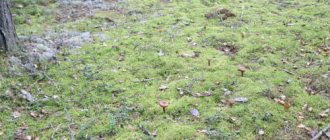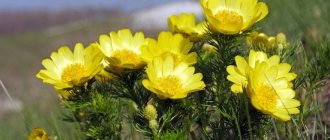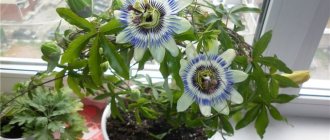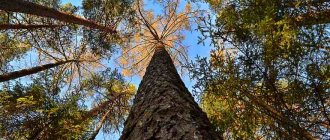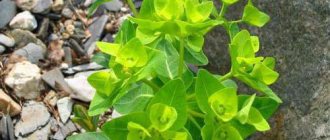Zyuznik - medicinal properties and contraindications
European sage grass is a perennial herbaceous plant. It is also called heart grass, marsh nettle. This plant is called wolfleg in Ukraine because the petals look like wolf tracks. The Russian name comes from “zyuzya”, that is, wet in the rain. Most often it grows near water. The leaves have stomata through which the grasshopper releases excess moisture. Drops flow down the plant, which in appearance resembles raindrops flowing from a wet person. Zyuznik grows in almost all European countries, in Central Asia, as well as in the Caucasus.
Where does it grow and what does zyuznik look like?
Zyuznik is very similar to nettle. In its natural environment, it grows on the coast of various bodies of water and in ditches where the soil is highly moist. You can find specimens that grow from water. People call the plant differently: heart grass, marsh grass, wild mother plant, wolf's paw. The plant is found in Eastern and Western Siberia, Europe, Central Asia and the Caucasus. The petals of the flower look like the tracks of a wolf, which is why in Ukraine the grass is called “wolffoot”. The name “zyuznik” comes from the word “zyuzya”, which means a person who is wet in the rain. A large amount of moisture slowly drains through the stomata on the leaves. This property determined the name “Zyuznik”.
Zyuznik is very similar to nettle
The plant is distinguished by a spindle-shaped root system and a straight stem with four edges, which branches from the top. It supports elongated leaves located oppositely. The lower leaves are attached to the petioles, and the upper ones are sessile. The inflorescences are located in the leaf axils. They are false whorls collected from small snow-white flowers that take the shape of a regular funnel. The corolla is strewn with rich red specks. Flowers have a specific scent. They bloom from July to September.
Also read: Creeping wheatgrass: description and beneficial properties
How to properly prepare and store medicinal raw materials?
In folk recipes, healers use only the upper part of the marsh nettle. Raw materials should be collected during peak flowering. After collection, the grass is sorted and excess debris must be removed. It is recommended to dry the grass in the air or in a room with good ventilation. The ambient temperature should not be higher than 50 degrees, otherwise many beneficial properties will be lost. You can use an electric dryer when preparing raw materials. Plants need to be dried by tying them into bunches.
Raw materials should be stored in bags made of linen or paper, as well as in tightly closed glass containers. The shelf life, subject to proper drying and storage, is two years.
Chemical composition and benefits
Scientists have not yet fully studied all the components. It has been established that about 5% are organic acids, 0.5% are essential oils. It also contains phytol, ursolic acid, steroids, and vitamin C in small quantities. It also contains bitterness, resins, and antioxidants.
Traditional healers recommend using marsh nettle to treat diarrhea, high temperature and fever, and also as an analgesic, hemostatic and diuretic. For coughs and bleeding, this medicinal plant will also be indispensable, as it contains tannins.
Research by scientists has confirmed that zyuznik can be very effective for diseases of the thyroid gland. In Europe, its benefits for hyperthyroidism are generally recognized. It slows down the process of producing excess hormones, bringing their levels back to normal. The modern drug Thyreogutt Mono was developed by German scientists. It contains marsh nettle and is used for cardiac neuroses caused by overworking of the thyroid gland. Patients taking the drug for about 2 weeks show positive dynamics. Performance improves and symptoms such as nervousness and sweating disappear. In order to consolidate the results, the drugs must be taken for at least two months. The remedy affects the very cause of the disease, and thus prevents many negative consequences. Such natural preparations act quickly, surpassing even traditional medicines.
Important!
An overdose of drugs based on zyuznik has not been observed, but it is better to follow the recipe and recommendations.
Medicinal properties
European sage has a strong sedative effect and anti-inflammatory effect. However, its main property is the ability to normalize the functioning of the thyroid gland with increased function. This plant can also have an analgesic effect; it stops bleeding. Before
It should be noted that zyuznik has a diuretic effect and reduces blood pressure.
Contraindications for use
- If the patient has diffuse goiter, then he is contraindicated to use this herb.
- Also, you should not take it if you have low blood pressure or are allergic to the components included in the composition.
- It is not recommended to use such drugs for children, pregnant women and during lactation. If absolutely necessary, only a doctor can prescribe the dosage and duration of the course for such people.
Note!
You should not increase the dose or duration of treatment on your own.
Can pregnant women take drugs containing zyuznik? In fact, scientists still differ in their opinions. On the one hand, the plant can help pregnant women with swelling, anxiety, and insomnia. But science does not know how this herb affects the fetus. If you want to use grass during pregnancy, you should definitely consult a specialist.
Herb European zyuznik: description and use in folk medicine
European sage grass is a herbaceous perennial plant. Common names are speckled grass, heart grass, chist, marsh nettle (due to its strong resemblance to ordinary nettle), wolf's paw.
The plant is used in folk medicine. Preparations prepared on its basis calm, reduce anxiety, reduce the excitability of the heart muscle, and relieve nervous tension. Also, marsh nettle has antipyretic, antitussive and hemostatic effects.
- 1. Description
- 2. Composition, benefits, contraindications
- 3. Recipes
Belongs to the Lamiaceae (or Lamiaceae) family. Height from 20 cm to 1 m (and even more). The root is spindle-shaped. With the help of underground shoots-stolons, reaching 20 cm, the plant carries out vegetative propagation.
The stem is tetrahedral, erect, branched in the upper part. The leaves are rough, their pairs are arranged crosswise, opposite. They have different shapes: the upper ones are oval, lanceolate. The lower ones are coarsely toothed, sawtooth. Multi-flowered inflorescences are located at the leaf nodes. The flowers are small, white, with purple spots on the petals, and funnel-shaped. They have a four-part corolla.
European grasshopper is found throughout Europe, in the foothills of the Caucasus, Siberia, some areas of Western Asia, and North America (in areas with a temperate climate). Prefers moist soil, banks of rivers and ditches, sedge and reed thickets. Blooms in June-August.
The aerial part of the plant is usually collected for medicinal purposes. It is harvested during flowering. As a rule, the upper, more tender part is cut off. Then the grass is sorted, removing damaged leaves, and hung in small bunches to dry in a cool, well-ventilated, darkened room. Drying in special dryers is allowed, subject to mandatory temperature conditions.
Composition of the European zyuznik:
- glycosides;
- resins;
- essential oils;
- phenolic carboxylic acids;
- tannins;
- lithospermic acid;
- aldehydes;
- fatty acids and their derivatives;
- sterols;
- higher aliphatic hydrocarbons.
Many of the substances included in the composition have not yet been identified.
The plant is of greatest value in the treatment of diseases of the endocrine system. The presence of lithospermic acid in its composition helps reduce the production of hormones and normalize the functioning of the thyroid gland.
In folk medicine, preparations from the plant have long been used for diseases of the heart and blood vessels, hyperfunction of the thyroid gland, neuroses, insomnia, and stomach pain.
Their use is also justified for menstrual irregularities and bleeding. Possessing a diuretic property, the plant relieves swelling. Thanks to its medicinal properties, zyuznik reduces excessive sweating, rapid heartbeat, and anxiety. Most patients note an improvement in their well-being after the first weeks of using marsh nettle. But to achieve and consolidate the effect, a long course of herbal treatment is necessary. In this matter, the advice of your doctor is required.
Like every medicine, the plant has contraindications. You should not use European zyuznik in the following cases:
- hypotension;
- Graves' disease;
- pregnancy and lactation;
- individual intolerance;
- childhood.
To treat various diseases, traditional healers use herbal infusions and alcoholic extracts of European sage. It may be included in the fees or applied independently.
Popular recipes:
Problem
Recipe
Reception
Hyperthyroidism
Drink 60 ml four times a day half an hour before meals. Treatment lasts 3 weeks. After a break of 7 days it can be continued.
Store the prepared broth in the refrigerator
Take 3 times a day, 5-10 drops
Drink the infusion warm, in small sips, twice a day. In addition to the sedative effect, the product has antipyretic and analgesic properties.
Hyperfunction of the thyroid gland (collection)
Take half a glass 4 times a day half an hour before meals
Nodules in the thyroid gland
The duration of treatment and recommended doses are determined by the doctor.
The use of marsh grass in folk medicine
- Healers have long used this plant in the treatment of diseases of the heart and blood vessels, kidneys, as well as nervous disorders. It is also indispensable for diarrhea and fever.
- In case of bronchitis, it quickly relieves cough, and if the patient has a high temperature, zyuznik will not only relieve the fever, but will also saturate the body with components that will contribute to its overall strengthening.
- In case of severe intoxication of the body, folk remedies have a positive effect.
- It will also help with malaria and tuberculosis.
- If inflammation occurs in the digestive organs, accompanied by pain, then marsh nettle will help cope with this problem.
- This herb also helps well with problems with the nervous system (insomnia, anxiety, and increased excitability).
- Due to the diuretic effect of the herb, it relieves swelling.
- If the patient has undergone anesthesia or has undergone a course of potent medications that have a negative effect on the blood, then this plant will help cleanse it.
- This medicinal plant also helps women prevent mastopathy and normalize disrupted cycles.
Related article: Banana - beneficial properties, description
How to use zyuznik for various malfunctions of the thyroid gland?
3 tablespoons of dry herb should be poured with one glass of boiling water. Strain after 15 minutes. Divide the resulting product into 3 parts and drink throughout the day before meals.
You need to take 2 parts of sage grass, plantain, hawthorn and strawberry leaves, one part each of lemon balm, as well as sage and mistletoe. All herbs should be mixed thoroughly. For half a liter of water take 2 tbsp. spoons of this mixture. Then the mixture is boiled for no more than 5 minutes. When the broth has cooled, it is filtered. After this, you need to add honey to taste and a tablespoon of motherwort juice. The product is divided into 5 parts and drunk throughout the day. The last portion should be drunk before bed.
Basically, after just a few weeks of taking such decoctions, positive dynamics begin. But this does not mean that you can stop treatment. The level of hormones secreted by the gland should decrease by a third, and for this the course should last at least two months.
Heart
To adjust the heart rhythm, prepare an alcohol tincture:
For 300 g of grass take 1 liter of vodka. This remedy is infused for about 20 days. It is recommended to take this tincture in an amount of 5-10 drops three times a day.
For 200 g of dry zyuznik grass, you need to take a liter of vodka or alcohol (you can take a different amount of components, maintaining the proportion). It is necessary to infuse for about 15 days, after which take 30 drops of tincture 5 times a day.
How to reduce blood pressure
50 g of zyuznik is poured with vodka or alcohol in an amount of 500 ml, left to brew in a dark place for about 2 weeks. You should take 20 drops of this tincture daily. It can be diluted with water or honey can be added to taste if the taste seems unpleasant to you. To enhance the therapeutic effect, it will be useful to add other components to the tincture. You can add, in addition to sage grass, also St. John's wort or forest chickweed.
Fever and fever
The following recipe will help get rid of heat and fever. If the patient has a cough, fever and other signs of a cold, then tea is prepared from the marsh nettle herb. The tea recipe is very simple. Take 2 teaspoons of raw materials per glass of boiling water. It is recommended to drink this tea when it has cooled down a little. Sweeteners should not be added to tea. Also, tea prepared according to this recipe will help those who suffer from stress and insomnia. It is useful to drink as a sedative, pain reliever, and also for blood purification purposes.
How to prepare anti-diarrhea medicine
Tea will also help with this problem, but instead of two spoons, you should put one in a glass. You need to steep the tea for at least two hours, then drink it half an hour before meals during the day, dividing the portion into 3 parts. This remedy will not only save you from diarrhea, but will also help with any disorders associated with the digestive system. It can also be used by women to normalize the menstrual cycle.
Fact!
Chinese medicine uses this plant along with its rhizome. Doctors use it to treat swelling, boils, and cycle disorders in women.
Myocardial infarction
For myocardial infarction, you can prepare a drug according to this recipe. First you need to prepare separately a tincture of motherwort and marsh nettle. Then mix them in equal parts. Each time before eating this remedy you will need to drink 40 drops.
The tincture of this medicine is prepared in this way. 50 g of dry grass is poured with 500 ml of alcohol or good vodka. It should be left to brew for about two weeks, closing the container with a tight lid.
For Graves' disease, alcohol tincture is taken about 30 drops three times a day before meals.
When taking folk remedies, patients note an improvement in their condition and continue the course of treatment, which indicates that the remedies are truly effective.
If you take this plant along with traditional medicine, it will help eliminate many side effects from medications, which is important for many patients. It is allowed to add components to herbal mixtures containing nettle for the treatment of certain other diseases. In this case, you can achieve good results.
If it is not possible to prepare the raw materials yourself, then you can purchase them at a pharmacy or online store. Although marsh nettle is considered harmless, consultation with a doctor before any use is necessary.
Traditional medicine recipes using heart herbs
- Zyuznik is used to get rid of tachycardia. To do this, prepare a tincture using vodka. The dried plant is crushed, poured with vodka and infused for three weeks. Drink the medicine thirty drops at a time with an interval of six hours between doses. As a result, heart contractions return to normal.
- Tea made from zyuznik relieves pain in the heart. Tea recipe: pour a tablespoon of the plant into a glass of boiling water (two hundred milliliters in volume) and infuse for four hours. The decoction is taken for twenty days.
- The therapeutic effect on the body can be enhanced if other herbs are added to the marsh grass. An alcohol tincture with the addition of St. John's wort and forest chickweed to the sage is effective. The herbs are infused in alcohol for one month. The medicine is taken three times a day, twenty-five drops.
- For hyperfunction of the thyroid gland, use a mixture that includes European sage. The recipe is as follows: two tablespoons of sage grass, the same number of spoons of plantain, mistletoe and hawthorn, as well as a tablespoon of strawberries are chopped and filled with water (in the ratio of fifteen grams of plant mixture half a liter of liquid). The herbs are boiled for five minutes and then infused for sixty minutes. At the final stage, ten milliliters of motherwort infusion with alcohol can be poured into the resulting decoction. The drink is drunk four times a day, half an hour before meals, half a glass.
Also read: Walnut leaves: beneficial and medicinal properties
Tea made from zyuznik relieves pain in the heart
Chemical composition
The stems, leaves and flowers of the European grasshopper contain biologically active substances: bitterness, resins, cardiac glycosides, lycopene, essential oils, tannins, carotene, vitamin C, antioxidants. The plant contains manganese and fluorine in microscopic quantities. The medicinal value of sage grass is increased by derivatives of organic acids (caffeine, cinnamon, rosemary), bioflavonoids and tannins. To have a positive effect on the body, a balanced natural composition of the active components that make up the plant is important.
Botanical description and chemical composition of European grasshopper
The perennial grass has an above-ground part 20-120 cm high. Characteristic is the formation of underground shoots, represented by stolons, no more than a quarter of a meter long. The foliage is serrated and rough.
The upper leaves are lanceolate and oval in shape. The lower foliage is serrated and deeply dissected. Cymose multi-flowered inflorescences of axillary type are collected from radially symmetrical, four-membered flowers with white petals, on which there are purple spots. The fruits are represented by a single nut.
Plant raw materials contain phenolic carboxylic acids, which have proven antigonadotropic and antithyroid-tropic effects on the human body. Among other things, such chemical components can reduce the amount of prolactin in the blood. The plant also contains essential oils, organic acids, flavonoids, vitamins “C” and “E”, and tannins.
Beneficial features
European sage is used in folk medicine as one of the remedies that have a positive effect on the endocrine system, in particular, regulating the functioning of the thyroid gland.
Although the plant is not included in the State Pharmacopoeia of the Russian Federation and has not yet found use in official medicine, due to its many healing properties in folk medicine it is used for severe pain in the stomach, heart problems, as a good sedative, and also for the treatment of thyroid diseases.
In the countries of the European Union, zyuznik is used in the production of several medications prescribed for cardiac neuroses and other cardiac disorders caused by hyperfunction of the thyroid gland. In addition, plant preparations help with neurovegetative disorders accompanied by symptoms of hyperthyroidism, but occurring without dysfunction of the thyroid gland; They are also prescribed in gynecology for the treatment of hormonal disorders associated with hyperthyroidism (mastopathy, menstrual irregularities, mastodynia).
Medicinal properties of European rosemary
The main advantage of sage grass over other herbs is its beneficial effect on the functioning of the thyroid gland. Thanks to this, it can regulate hormonal levels. It is used to relieve nervousness and eliminate heart pain. The medicinal properties of the herb zyuznik include:
- normalization of intestinal perilstatics;
- eliminating stomach pain;
- diuretic effect;
- decrease in body temperature;
- removal of puffiness;
- getting rid of tachycardia;
- prevention of vascular spasms;
- regulation of thyroid function;
- decrease in heart rate.
Due to its diuretic properties, zyuznik is used for kidney diseases. However, it is prohibited in case of exacerbation of inflammatory and infectious processes. For diseases of the digestive tract, the plant and its derivatives effectively relieve pain and facilitate the process of defecation. In some cases, it is prescribed to treat hemorrhoids.
The effect of zyuznik on the body is compared with the properties of quinidine. It reduces the excitability of the heart muscle and slows the pulse. This effect helps to cope with causeless fear and increased anxiety. By preventing vascular spasms, it is possible to achieve normalization of blood circulation and blood pressure.
The length of underground shoots of the plant can reach 20 cm
Medicinal properties of zyuznik for women
Heart herb is often used to treat female diseases. Due to the content of lithospermic acid, it reduces the activity of the thyroid gland, which is important for hyperthyroidism. By reducing the production of thyroxine, the plant controls iodine levels in the body. As a result of using zyuznik for hyperthyroidism, it is possible to get rid of excessive sweating, irritability and excessive apathy.
The herb is no less effective against mastodynia. It helps eliminate pain in the mammary gland that worsens before the onset of menstruation. This effect is due to the content of hydroxycinnamic acid derivatives. In addition, zyuznik is able to reduce the level of prolactin, which often causes the appearance of cystic formations in the breast.
Indications for use
In case of hyperthyroidism, lithospermic acid, which is part of the European sage extract, reduces the excitability of the thyroid gland; Providing a normalizing effect on iodine metabolism, it reduces excess production of thyroxine and other thyroid hormones. Its use is very gentle, but noticeably reduces agitation and hyperhidrosis, reduces heart rate and nervousness, calms eyelid tremor and body tremors, improves mood and increases performance. As a means of treating endocrine pathologies in cases of dysfunction of the thyroid gland, the raw material of European sage is most often used in homeopathy. Patients' well-being as a result of taking the drugs usually improves after 2 weeks of use.
For Graves' disease, palpitations, heart rhythm disturbances (extrasystoles), endocarditis, neuroses and disorders of the nervous system, insomnia, unreasonable feelings of fear, Zyuznik drugs affect the excitability of the heart muscle, slow down the pulse, making it smoother and deeper. Its action is similar to that of quinidine (an alkaloid isolated from the bark of the cinchona tree). A distinctive feature of products based on European sage grass is the impossibility of exceeding their dosage, which is very important for weakened patients with hyperthyroidism. The effectiveness of sage grass in combination with motherwort increases.
In folk medicine, European sage is also used for other hormonal disorders, treatment of diseases accompanied by high fever, intoxication, and prolonged cough. Its extracts have a positive effect on blood composition and, due to the content of hemostatic substances, are also good for bleeding.
When adding sage grass to multicomponent preparations, it is necessary to take into account its ability to reduce blood pressure and its diuretic effect, due to which the plant is also used as a decongestant.
Indications for treatment
One of the components of the sage extract is lithospermic acid. It reduces the activity of the thyroid gland, so the plant is successfully used in the treatment of hyperthyroidism. The herb acts gently, but not completely. When the production of iodine-containing hormones is reduced, a person stops feeling excited, his eyelids stop trembling, sweating disappears, the heart slows down, his mood improves and his performance increases.
For diagnoses such as Graves' disease and thyroid nodules, a positive effect is observed after a couple of weeks. The good thing about the plant is that it is difficult to overdo it, which is especially important for hyperthyroidism. Plants are also used for other problems with the hormonal status of the body, for example, menstrual irregularities and mastopathy.
Medicines based on zyuznik also work on the condition of the heart. Moreover, their action is similar to the action of quinidine contained in the bark of the cinchona tree. This connection helps with erratic heart rhythms.
Plant harvesting period
The plant is richer in essential oils and active ingredients closer to August. That is, the best time to procure raw materials is from the end of July to September. Cut off the tops of the stems and hang them dry in a place protected from the sun. The faster the raw material is dried, the more nutrients it will retain. When collecting European sage, one can easily confuse it with high sage, the medicinal properties of which have not been fully studied. The plant is distinguished by its taller size, its shoots stretch up to 2 m in height, and complex carved leaves (in the European species they are solid).
Contraindications
Despite the proven lack of toxicity of European sage, it is recommended to take it under medical supervision. The use of plant preparations is contraindicated for pregnant and lactating women, children, as well as for diffuse goiter, hypothyroidism or hypotension. It should be borne in mind that therapy with drugs from the sage can affect the results of diagnostic tests, especially in the case of the use of radioactive isotopes (for example, when mapping the thyroid gland).
Long enough use or excessive dosage can negatively affect the function of the pancreas. Regular long-term use of infusions and decoctions in excessive quantities can also lead to diabetes.
Zyuznik: medicinal properties and contraindications
European zyuznik is known by many names: zyuzik, zhuzhnik, wolf's foot (paw), water horehound, marsh nettle, dragolub, speckled grass. In most cases, this plant is used to normalize the functioning of the endocrine and cardiovascular systems, but these are not the only areas of its application. What kind of plant is this and how is it useful? Let’s look at it further.
Zyuznik is a perennial plant, belongs to the Yasnotkov family, its Latin name is Lycopus europaeus, which literally means “legs of a wolf”. Prefers areas rich in moisture: swamps, meadows, shallow waters, coastal areas, but is highly drought-resistant. Loves direct sunlight and partial shade. The height of the stems varies from 25 to 120 cm. The stems are cobblestone, tetrahedral, the leaves are oblong, rough to the touch, with jagged edges. In the axils of the leaves there are small light flowers interspersed with burgundy.
The plant's range is very wide: sage grass can be found in most European countries, some countries in East Asia and North America. The flowering period lasts from June to August.
It is worth noting that the chemical composition of European grasshopper has not been sufficiently studied, so the following components of the plant may not be its only beneficial components.
Chemical composition of the plant:
- tannins;
- alkaloids;
- flavonoids;
- lycopene;
- essential oil;
- vitamins: C, A, B4;
- organic acids (malic, tartaric, citric);
- other acids;
The main active substance used in the treatment of thyroid diseases is oxidized lithospermic acid. It binds to the protein part of TSH molecules, making them inactive for the receptors - this ensures antihormonal and antitumor effects.
Article on the topic: Small-leaved linden - useful properties, description
Description
Tall zyuznik is another type of zyuznik growing here. It differs from European grasshopper primarily in its leaves, and, perhaps, there is no need to look for any other differences. Look for yourself - the leaves are openwork, I don’t even remember right away which other plant has such leaves. Upd. 2021.02
Almost all photos have been updated.
Flowers
The flowers of the tall thyme are collected in dense axillary whorls. Blooms in June-September.
A broom with four blades, almost correct.
The throat is covered with numerous hairs, the upper petal is somewhat larger, the petals are white or slightly pink, with purple spots. The lobes of the lower lip are slightly different. The corolla itself is only slightly larger than the calyx.
There are two stamens with light purple or pink anthers. Pistil with two stigmas. Both the stamens and the pistil protrude beyond the corolla.
The bracts are small, linear-lanceolate, turning into a spine. In the photo you can find them right under the whorls - the lowest leaves peeking out.
Please note: the corolla is four-lobed, and the calyx is five-lobed! The calyx is bell-shaped, with 5 spinous teeth, abundantly pubescent, but I never found glandular hairs or glands on it.
Leaves
The leaves are lanceolate or oval, with long linear processes. Or in other words - the leaves are pinnately incised or pinnately divided. In any case, they differ from the leaves of European sage grass.
The reverse side of the sheet is noteworthy in that it shows many dotted glands. There are glands - that means there are useful properties. In addition, the leaf pubescence is clearly visible.
Stem
The stem is erect, up to one meter and higher.
The stem is tetrahedral, grooved.
Fruit
Let's return to the cups: at the bottom of one of them, a fruit began to form in the form of three (there should be four) nuts. They are very small, about 1 mm.
Habitat
Tall zyuznik grows in thickets along the banks of reservoirs, swamps, and in wet meadows. Its usual companions: string, loosestrife, chastukha. Zyuznik is quite often found along the Sura oxbow.
Application
The use of high sapling is not described. It can be assumed that its properties are similar to European zyuznik, but no one will give you a guarantee.
More photos:
See what else needs to be photographed for this article.In general, you need to do the following: And everything is already on its way.
Preparation and storage
The collection of medicinal raw materials falls during the flowering period, that is, from June to August. The entire above-ground part of the plant is suitable for the preparation of medicinal products. Flowers, leaves and stems can be dried on a tray or paper in a dry area with good ventilation. You can also naturally dry the raw materials outside in the shade. It is convenient to collect the stems in bunches and dry them tied up, then wrap them in paper and store them that way.
You can prepare raw materials using an electric dryer, but the temperature should not exceed 50°C. You can store the workpiece in a glass container with a tight lid. If storage conditions are met, the herb can be used for 2 years.
Useful properties and treatment
As stated earlier, European grasshopper is often used to control thyroid hormones. In addition, it is effective in the following cases:
- to stop and clot blood;
- with fever;
- for stomach pain;
- for cardiac dysfunction (VSD, tachycardia);
- as a sedative;
- for insomnia;
- with an unreasonable feeling of fear, anxiety;
- with diarrhea;
- as a diuretic;
- for colds and coughs.
The general recipe for preparing the infusion is 2 tsp. pour a glass of boiling water over the raw material and leave to steep for 10 minutes. Then strain and divide into two equal portions. You need to take the drug in small sips in the morning and evening.
Thyroid diseases
In case of hyperfunction of the thyroid gland or the formation of nodes on it, you can use several recipes:
- 3 tbsp. l. pour 200 ml of boiling water over the zyuznik, leave for 15 minutes and strain. Divide the amount into three doses, drink 30 minutes before meals;
- take the following ingredients: 2 parts each of sage grass, hawthorn, plantain, strawberry leaves, 1 part each of lemon balm, sage and mistletoe. Mix the raw materials. At 2 tbsp. l. take 500 ml of water, boil for 5 minutes, cool and strain. Add a little honey, 1 tbsp. a spoonful of motherwort juice. Divide the amount into 5 doses and drink half an hour before meals, drink the last time before bed;
- Mix the following herbs in equal proportions: grasshopper, mistletoe, celandine, birch buds, tartar, white damselfish. For 1 tbsp. l. raw materials need 400 ml of boiling water. Boil the product for 5 minutes, then cool and add 2 tbsp. l. plantain juice. It is advisable to discuss the dosage and duration of the course with your doctor.
Often the effect of taking it occurs after 2-3 weeks of treatment. But to reduce hormone levels by 20-40%, at least a two-month course is required. Treatment with this plant should not be stopped suddenly - the dosage should be gradually reduced until the use is completely stopped.
Diseases of the cardiovascular system
If you need to improve your heart rhythm, you can prepare an alcohol tincture from sage grass:
- Pour 1 part of the raw material into 3 parts of vodka and leave for three weeks. The tincture of 5-10 drops should be taken three times a day;
- For 1 part of raw material, take 5 parts of vodka, leave for two weeks. Take 4-5 times a day, 30 drops.
To lower blood pressure, there is a tincture recipe - for 1 part of plant material you need 10 parts of vodka. The drug needs to be infused for about two weeks. You should take 20 drops of the product every day. If the taste of the tincture is too unpleasant, it can be dissolved in 50 g of water or a small amount of sugar.
As an antipyretic and antifever
In case of elevated temperature, fever, colds and cough, it is necessary to prepare tea from zyuznik. To do this, you can use the standard recipe: a glass of boiling water for 2 tsp. raw materials. Tea should be drunk warm, without adding sugar or other sweeteners.
The drug according to the given recipe is useful to take as a mild pain reliever and sedative, for sleep disorders, stress, and to cleanse the blood.
As an antidiarrheal and astringent component
Tea is also suitable for stopping diarrhea, but it can be made less intense: take 1 tsp per glass of boiling water. raw materials. You need to infuse the product for at least 2 hours, then divide it into 3 equal portions and take it 30 minutes before meals.
The remedy prepared according to this recipe is suitable not only for indigestion, but also for other gastrointestinal diseases, as well as for cycle disorders in women.
Application of European sage grass
In folk medicine, to restore the functioning of the thyroid gland, it is recommended to drink zyuznik tea, the preparation of which requires 2 teaspoons of dry herb, brew with a glass of boiling water, leave for 10 minutes, then strain and take in small sips warm. The daily norm is 2 cups, the duration of treatment is 3-4 weeks.
Increased function of the thyroid gland can be normalized using the following collection: 2 parts each of European grasshopper, plantain, hawthorn fruit, strawberry leaf and 1 part each of lemon balm, sage, mistletoe. Grind the ingredients and combine. Take 15 grams of this mixture for 0.5 liters of water, boil for 5-7 minutes, leave for about an hour. Strain. Add 100 drops of tincture obtained by mixing equal parts of tinctures of hops, motherwort, hawthorn, mint and valerian, as well as 10 grams of string juice (or motherwort) and honey in the amount of 1 tablespoon. Take the remedy 20 minutes before meals, 100 ml, 4 times a day.


